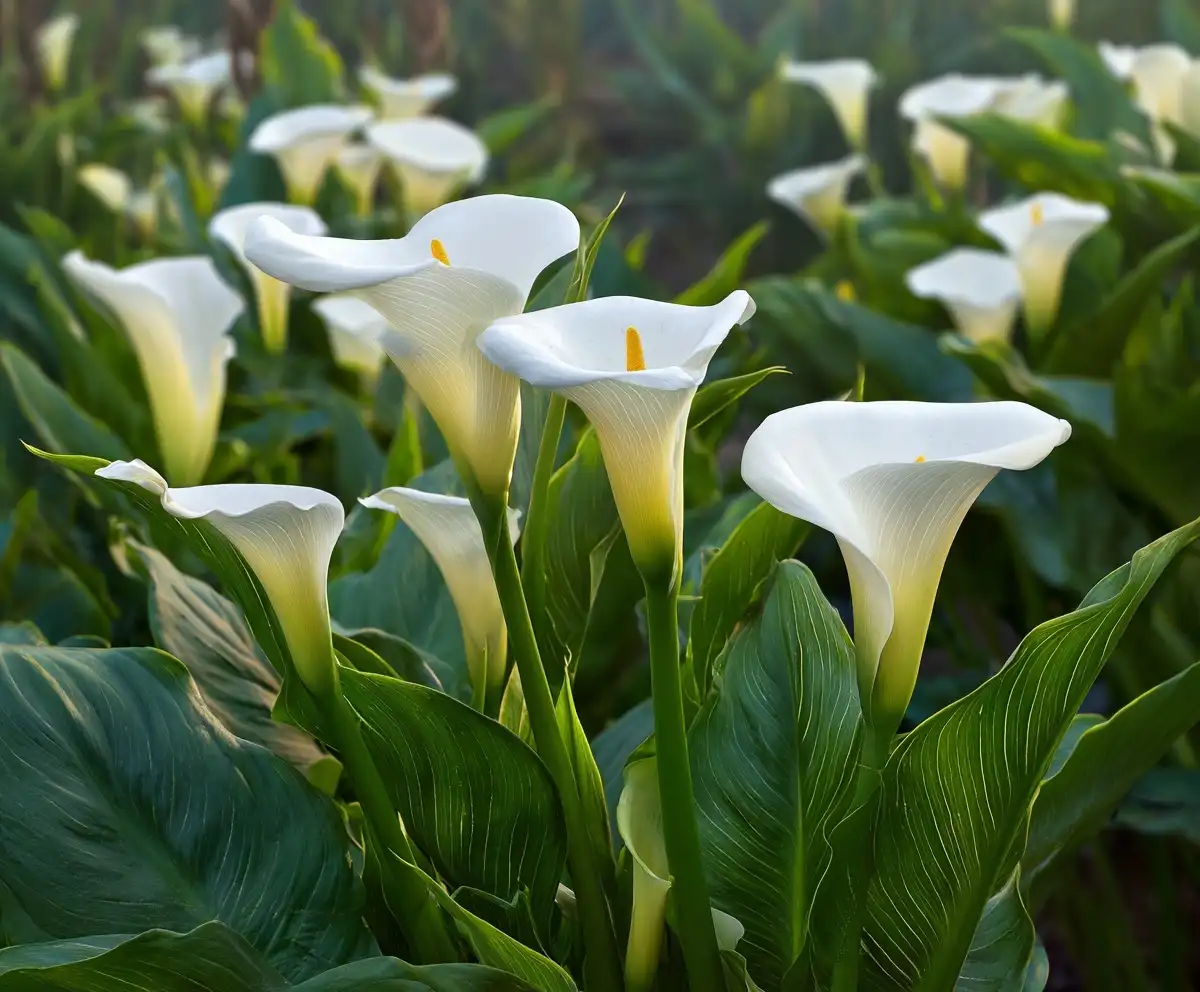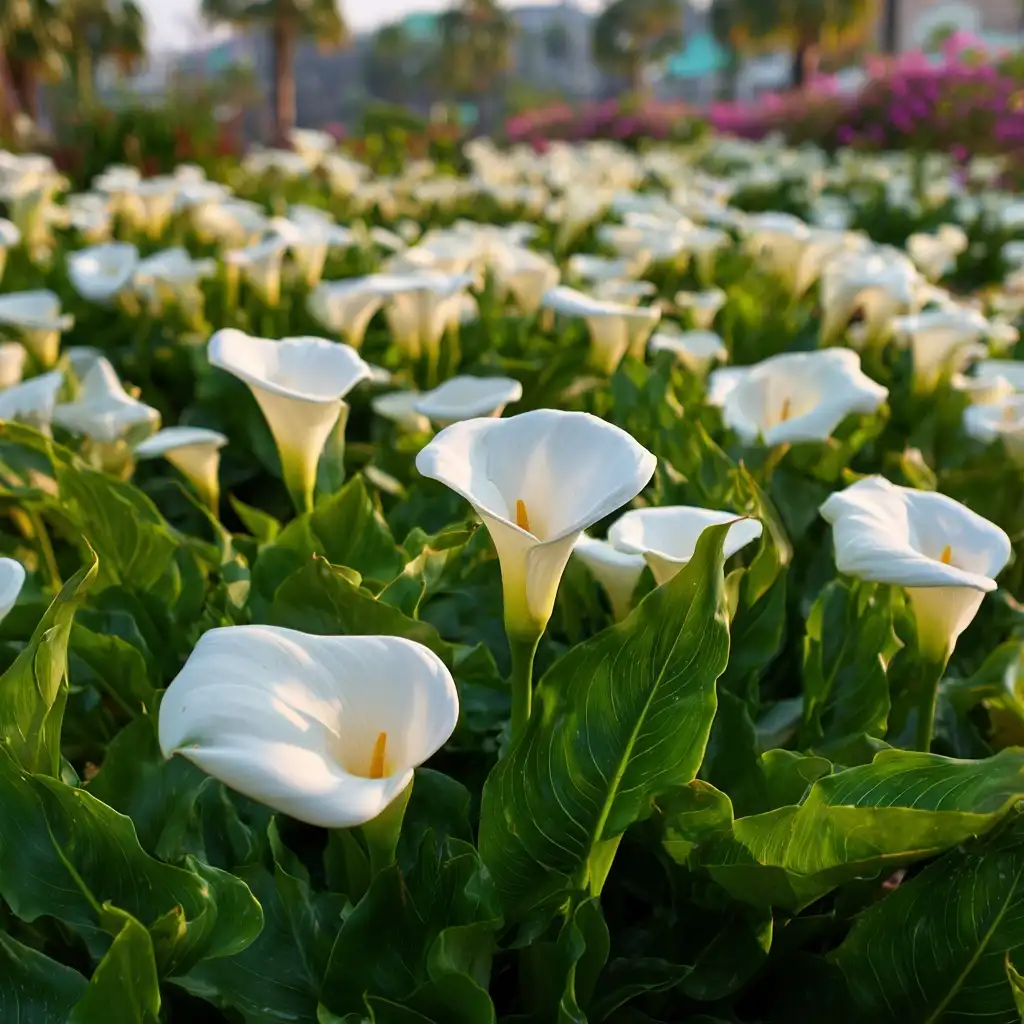Calla lily plant care doesn’t have to be complicated. These elegant, trumpet-shaped flowers are surprisingly low-maintenance and flourish in both indoor pots and outdoor beds. Whether you’re adding a splash of color to a sunny patio or brightening a windowsill, calla lilies reward growers with striking foliage and vibrant blooms when given the right conditions.
From selecting the right soil to understanding watering needs, this guide covers everything you need to know to keep your calla lilies thriving. No matter your experience level, you’ll find that a little attention goes a long way with this stunning plant.
🌿 Love gardening inspiration? Follow me on Pinterest for bold plant ideas, tips, and seasonal color!
Table of Contents
Calla Lily Plant Care Tips
Caring for calla lilies starts with understanding their basic needs. These plants thrive in moist, well-draining soil and enjoy moderate warmth with indirect light. Whether grown in containers or planted in garden beds, they’ll produce lush green leaves and colorful spathes when their growing conditions are met.
Here are essential tips for successful calla lily plant care:
- Plant in the right season: Early spring is ideal for planting calla lily rhizomes outdoors. For indoor growing, plant anytime if you can mimic warm conditions.
- Ensure good drainage: Calla lilies dislike soggy roots. Always use well-draining soil and containers with drainage holes.
- Monitor sunlight levels: While they enjoy bright light, avoid placing them in direct, scorching sun—especially indoors.
- Trim faded blooms: Removing spent flowers encourages new growth and keeps the plant tidy.
- Allow dormancy: After blooming, calla lilies naturally go dormant. Reduce watering and let the leaves yellow before trimming them back.
With a few thoughtful steps, you can enjoy healthy, vibrant calla lilies for years—indoors or out.
Plant Size
When planning your space for calla lily plant care, it’s helpful to know how large these plants can grow. While mature sizes can vary slightly depending on the variety, most calla lilies maintain a compact, manageable form that suits both garden borders and indoor containers.
- Height: Most calla lilies grow between 18 and 24 inches tall, although some varieties can reach up to 36 inches when in full bloom.
- Spread: Their foliage typically spreads to about 12 to 24 inches, forming a neat, rounded clump.
- Flower height: The blooms often rise just above the foliage on sturdy stalks, adding vertical interest.
This moderate size makes calla lilies ideal for mixed plantings, patio pots, or decorative planters by windows and entrances. Their upright structure also prevents crowding and makes them easy to position among other plants.
Light Requirements
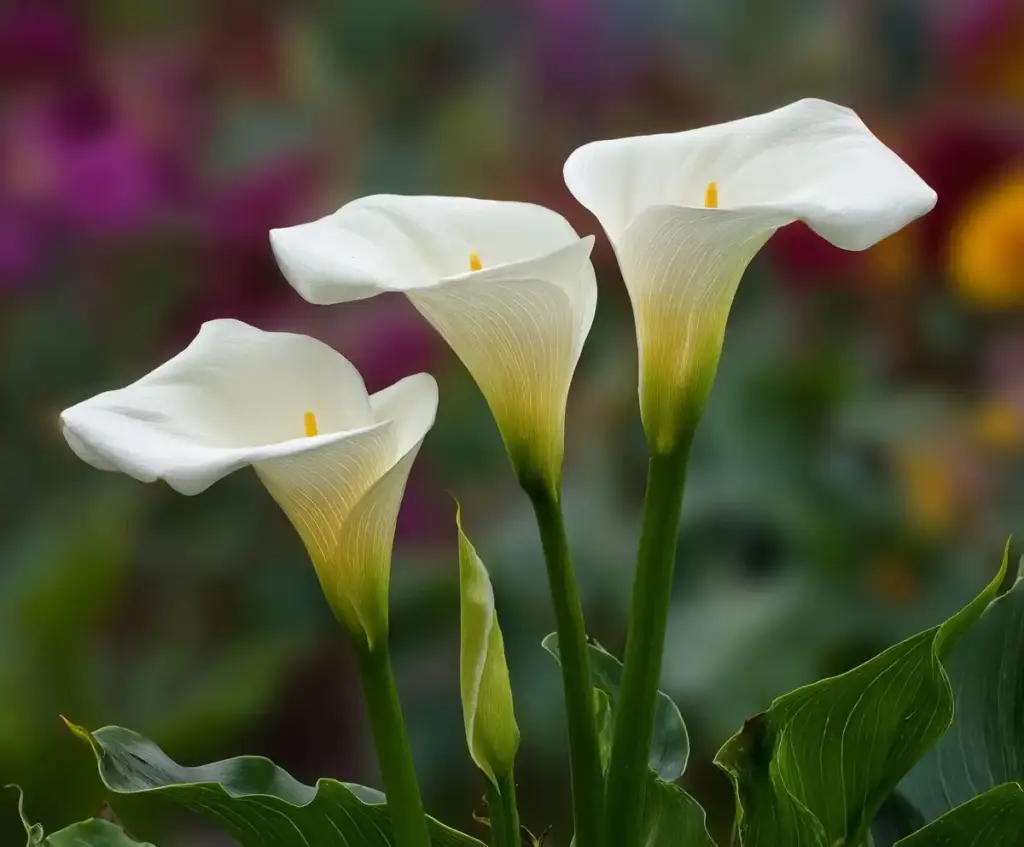
Proper lighting plays a key role in successful calla lily plant care. These plants are adaptable but thrive best when their light needs are matched to their growing environment.
Outdoor Lighting:
- In cooler climates, calla lilies prefer full sun for strong growth and abundant flowering.
- In warmer regions, they benefit from partial shade during the hottest part of the day to prevent leaf scorch.
Indoor Lighting:
- Indoors, place your calla lily near a bright, east- or west-facing window.
- Avoid direct afternoon sunlight, which can dry out the plant or fade the flowers.
- If natural light is limited, a grow light can help maintain healthy foliage and blooms.
Inadequate light may result in fewer flowers or leggy growth, so observe your plant’s response and adjust its placement if needed.
Watering, Temperature & Humidity
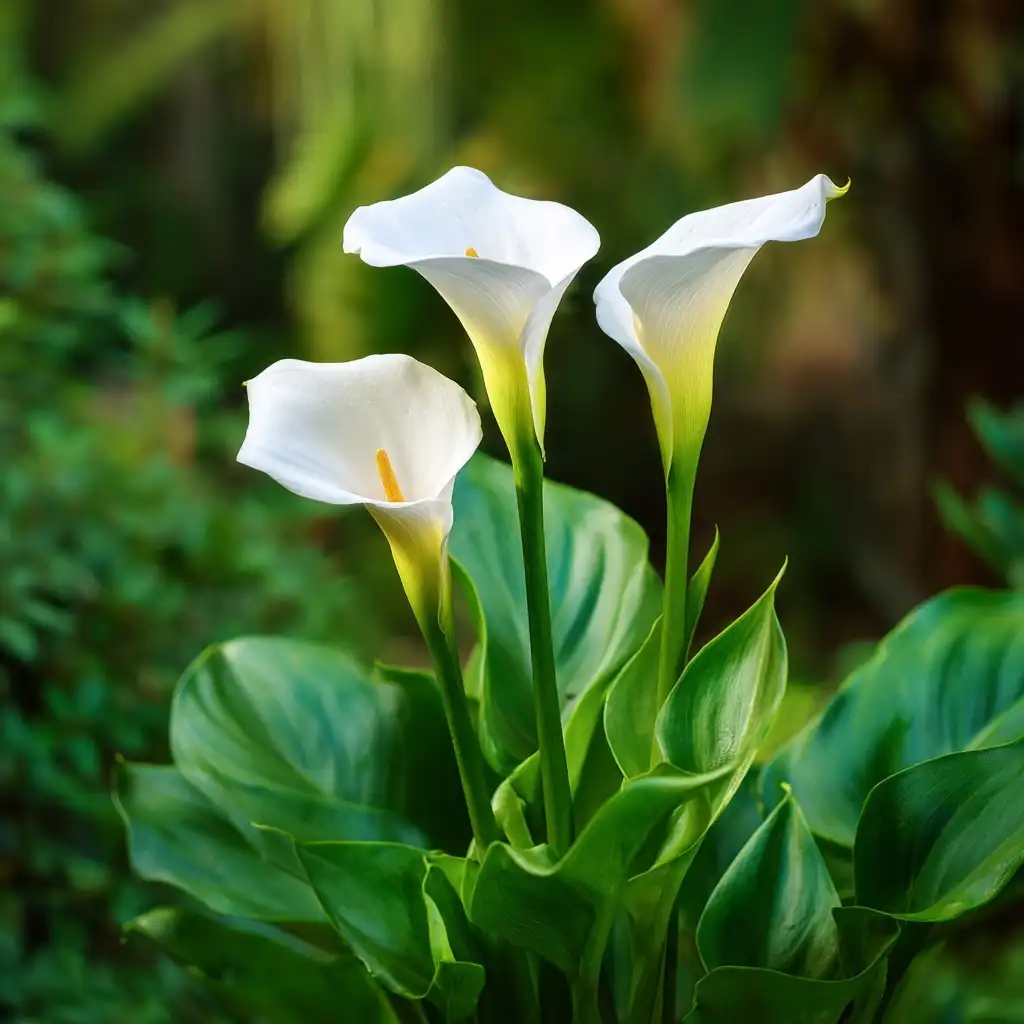
Mastering the right watering schedule is a cornerstone of proper calla lily plant care. These plants love moisture—but not too much of it.
Watering:
- Keep the soil consistently moist, but never soggy.
- Use well-draining soil to prevent root rot.
- During the growing season (spring through summer), water 2–3 times per week or when the top inch of soil feels dry.
- Reduce watering in the dormant period (fall and winter) until new growth appears.
Temperature:
- Ideal temperature range: 60–80°F (16–27°C).
- Avoid exposing your plant to temperatures below 55°F (13°C), as calla lilies are cold-sensitive.
- Indoors, protect the plant from cold drafts and sudden temperature changes.
Humidity:
- Calla lilies appreciate moderate to high humidity.
- In dry indoor environments, consider using a humidity tray or room humidifier to keep levels above 40%.
- Misting isn’t necessary, but maintaining ambient moisture helps promote vibrant foliage and flowers.
Balancing moisture, warmth, and air quality ensures your calla lilies grow strong and bloom reliably.
Soil Type
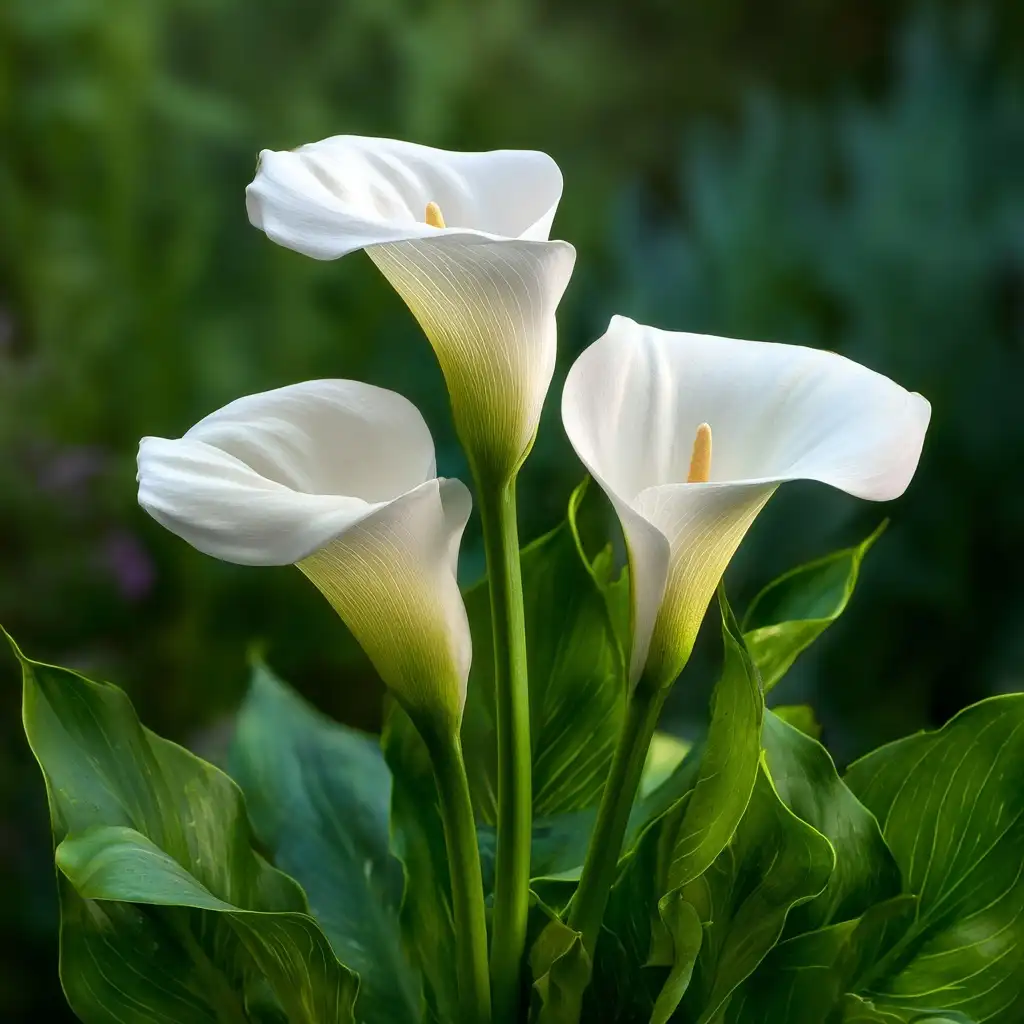
Choosing the right soil is essential for effective calla lily plant care. These plants need a growing medium that retains moisture without becoming waterlogged.
Best Soil for Calla Lilies:
- Use a well-draining potting mix enriched with organic matter.
- Ideal ingredients include:
- Peat moss – improves moisture retention and aeration
- Compost or aged manure – adds nutrients naturally
- Perlite or sand – boosts drainage
pH Level:
- Calla lilies prefer a slightly acidic to neutral pH—around 6.0 to 6.5.
Whether you’re planting in pots or garden beds, avoid compacted or heavy clay soils, which can lead to poor drainage and root rot. Instead, aim for loose, rich, breathable soil that holds moisture while letting excess water escape.
Good soil sets the foundation for healthy roots and long-lasting blooms.
Fertilizing
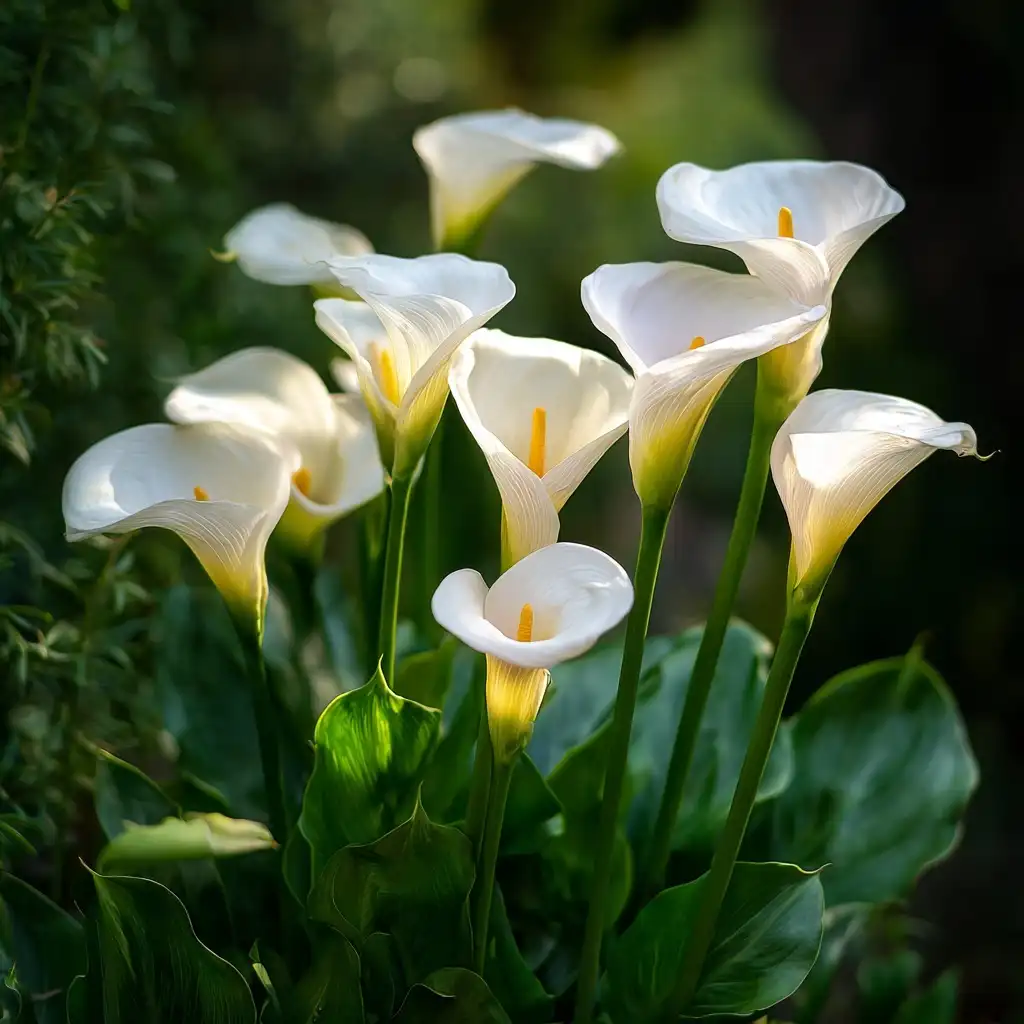
Fertilizer plays a key role in supporting healthy growth and regular blooming, especially during the active season. For best results, consistent feeding is part of essential calla lily plant care.
When and How to Fertilize:
- Start feeding when new growth appears in spring.
- Use a balanced liquid fertilizer (e.g., 10-10-10 or 20-20-20) every 2–3 weeks during the growing season.
- Stop feeding once the blooms fade and the plant begins to go dormant.
Fertilizer Options:
- Liquid fertilizer: Easy to apply and fast-acting.
- Slow-release pellets: Ideal for gardeners who prefer less frequent feeding.
- Organic options: Well-rotted compost or fish emulsion can enrich soil without chemicals.
Avoid over-fertilizing, which can lead to excessive leafy growth and fewer blooms. Follow the manufacturer’s directions and always water after applying fertilizer to avoid root burn.
Potting & Repotting
Whether you’re growing indoors or out, proper potting is an important aspect of calla lily plant care—especially when grown in containers.
Potting Tips:
- Use a container 10–12 inches wide and deep, with good drainage holes.
- Fill with a well-draining mix rich in organic matter.
- Plant rhizomes about 3–4 inches deep, with the “eye” facing up.
- Water lightly after planting and place in a warm, bright location.
Repotting Guidelines:
- Repot every 2–3 years, or when roots become crowded and growth slows.
- Signs it’s time to repot:
- Flowering decreases
- Soil dries out too quickly
- Roots circle the bottom of the pot
When repotting, gently remove the plant, trim dead roots, and refresh the soil before placing it into a slightly larger container. Repotting after the dormant period, in early spring, gives your plant a fresh start.
Calla Lily Plant Propagation
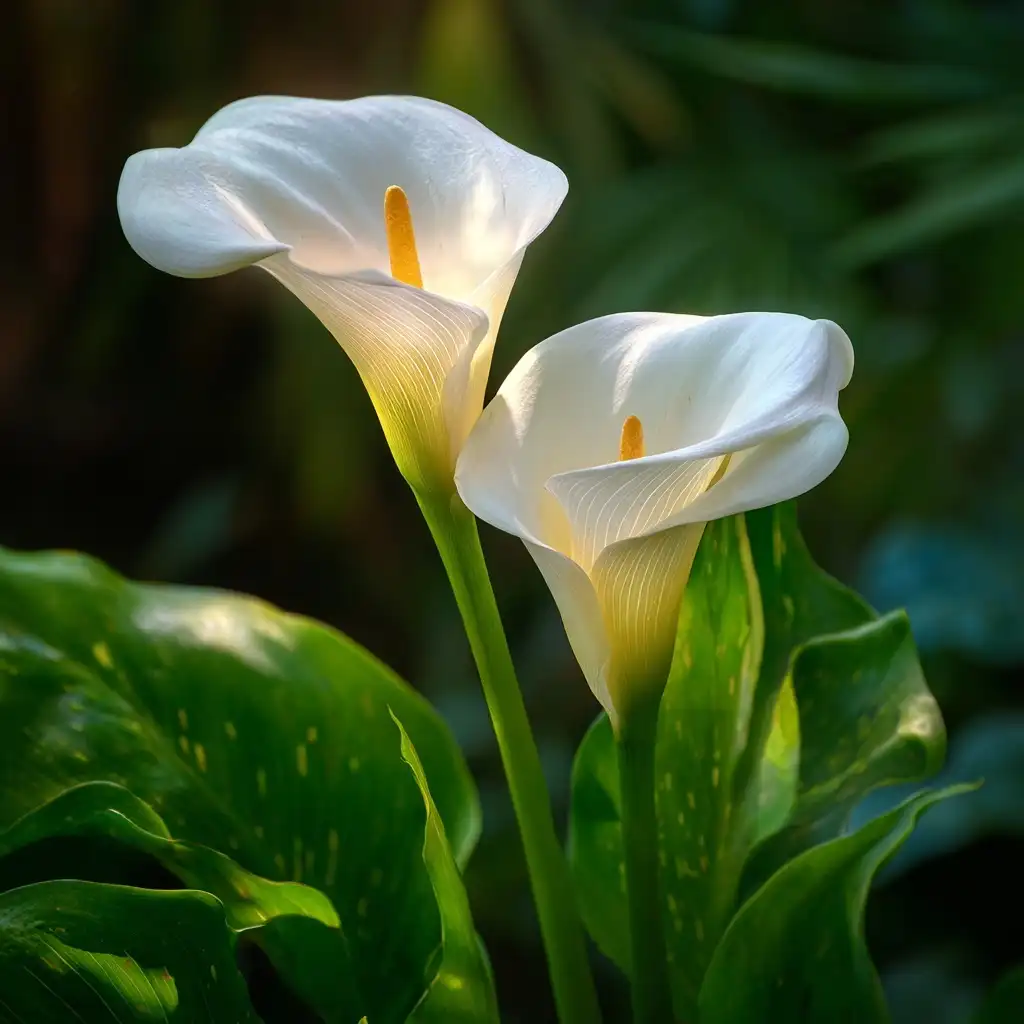
One of the most rewarding parts of calla lily plant care is propagation. These plants multiply through rhizomes, allowing you to grow more lilies from a mature plant without needing seeds.
How to Propagate:
- Best time: Early spring (after frost) or late summer (after flowering).
- Method: Rhizome division
Steps:
- Carefully remove the plant from its pot or garden bed.
- Gently brush off soil and locate natural divisions in the rhizomes.
- Use a clean, sharp knife to separate sections—each should have at least one “eye” or growth point.
- Allow cut surfaces to dry for a day, which helps prevent rot.
- Replant divisions in fresh soil, about 3–4 inches deep, and water lightly.
This method is simple, low-risk, and ensures that your calla lilies continue to thrive while giving you new plants for containers or garden borders.
Different Types of Calla Lilies
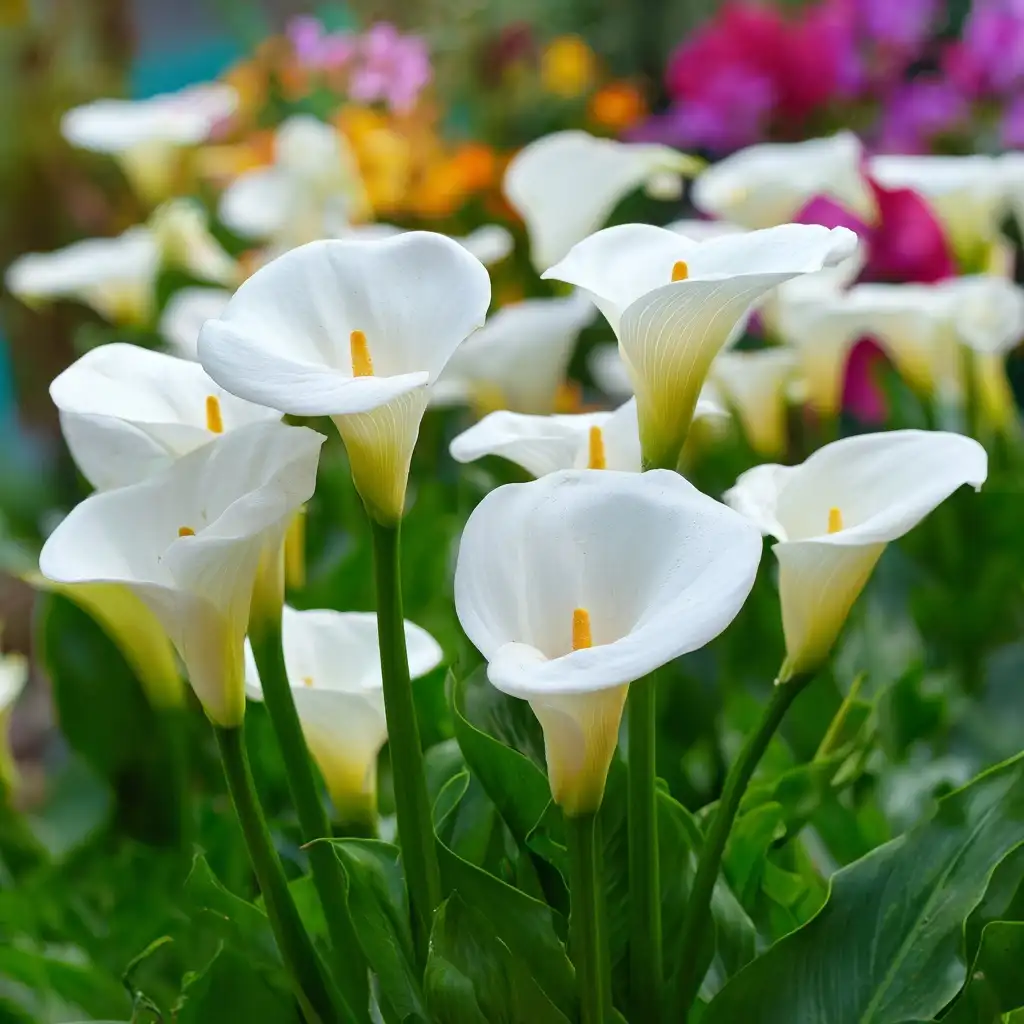
Understanding the many varieties available can help elevate your calla lily plant care by choosing types that suit your climate, color preferences, or space. While care needs are similar across cultivars, some varieties differ slightly in light or moisture tolerance.
Popular Varieties:
‘Fire Dancer’
- Bold, reddish-orange blooms with spotted green leaves
- Grows well in full sun to partial shade
- Eye-catching in beds and borders
‘Pink Melody’
- Delicate rosy pink spathes on sturdy stems
- Typically reaches 12–24 inches in height
- Blooms from summer through fall
‘Acapulco Gold’
- Bright, golden-yellow flowers with rich green foliage
- Thrives in moist soil and partial sun
- Ideal for vibrant summer displays
‘California Red’
- Features deep magenta-red blooms
- Excellent for dramatic color contrast in containers or flower beds
‘Nightlife’
- Produces dark purple to black flowers
- A standout in monochromatic or modern garden schemes
‘California Ice Dancer’
- Offers creamy white blooms on mid-sized plants
- Leaves are darker than most, adding a nice foliage contrast
Other Varieties
- ‘Crystal Blush’ – Pale pink-white blooms with a soft gradient
- ‘NightCap’ – Similar to ‘Nightlife’, but slightly more compact
Each cultivar adds its own flair to a garden or interior display. Always double-check individual care notes, as some varieties prefer more shade or are better suited for containers.
Calla Lily FAQs
Even with the best calla lily plant care, questions often come up. Here are the most common concerns gardeners have—and how to solve them.
Are Calla Lilies Toxic to Pets?
Yes. Calla lilies contain insoluble calcium oxalates, which are toxic to cats, dogs, and even small children if ingested. Symptoms may include:
- Mouth irritation
- Drooling
- Vomiting
- Difficulty swallowing
Always wear gloves when handling the plant, and keep it out of reach of curious pets and kids.
How Do You Plant Calla Lily Rhizomes?
- Identify the “eye” or bud on the rhizome and face it upward.
- Plant 3–4 inches deep in moist, well-draining soil.
- Space rhizomes at least 6–12 inches apart in garden beds.
Planting them incorrectly (e.g., upside down or too deep) can delay or prevent sprouting.
Why Are My Calla Lily Leaves Turning Yellow?
Yellowing leaves can be caused by several issues:
- Overwatering → root rot
- Nutrient deficiency → feed with a balanced fertilizer
- Natural dormancy → if it’s late in the season, the plant may be preparing for rest
Check root health and soil moisture first, then adjust care accordingly.
Are Calla Lilies Prone to Diseases and Pests?
While relatively low-maintenance, calla lilies can develop issues under poor conditions.
Common problems:
- Fungal issues: Root rot, leaf spot, crown rot
- Pests: Aphids, thrips, spider mites
Prevention tips:
- Avoid overwatering
- Keep leaves dry and clean
- Remove dead foliage
- Use neem oil or copper-based fungicides if needed
Keeping the environment clean and the soil balanced goes a long way toward disease prevention.
Conclusion
Mastering calla lily plant care means giving these elegant plants the right balance of moisture, light, and seasonal attention. Whether you’re growing them in pots on a sunny windowsill or planting them in a garden bed, calla lilies will reward your efforts with stunning blooms and vibrant foliage.
Remember to:
- Keep the soil moist but well-drained
- Provide plenty of bright, indirect light
- Repot and divide rhizomes as needed
- Watch for pests and signs of overwatering
With a little care and planning, your calla lilies can thrive year after year—indoors and out.

